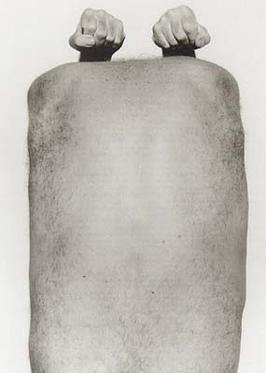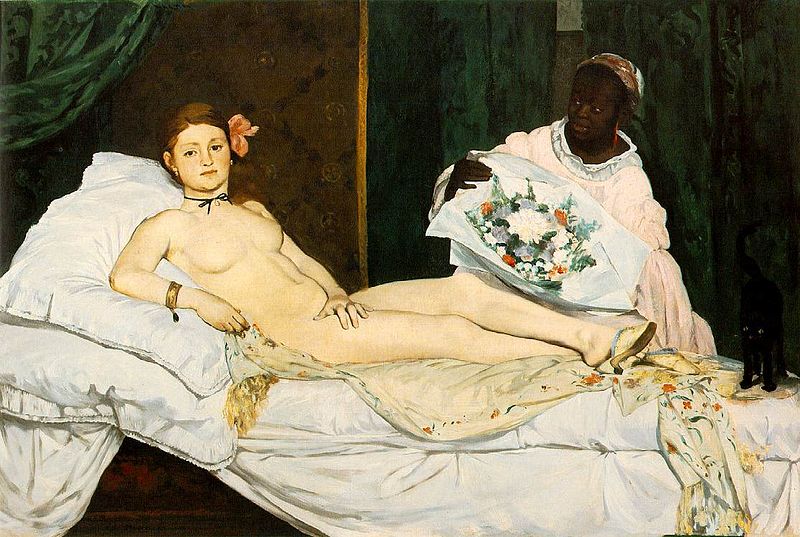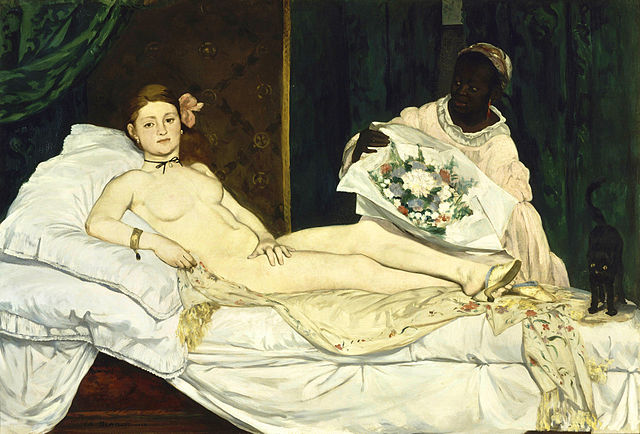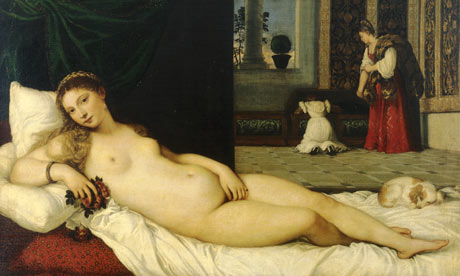A mask is an object normally worn on the face, typically for protection, disguise, performance or entertainment. Masks have been used since antiquity for both ceremonial and practical purposes. They are usually worn on the face, although they may also be positioned for effect elsewhere on the wearer's body, so in parts of Australia giant totem masks cover the body, whilst Inuit women use finger masks during storytelling and dancing.
Masks in Performance
Throughout the world masks are used for their expressive power as a feature of masked performance - both ritually and in various theatre traditions. The ritual and theatrical definitions of mask usage frequently overlap and merge but still provide a useful basis for categorisation. The image of juxtaposed Comedy and Tragedy masks are widely used to represent the Performing Arts, and specifically Drama.
Ritual Masks
Ritual masks occur throughout the world, and although they tend to share many characteristics, highly distinctive forms have developed. The function of the masks may be magical or religious; they may appear in rites of passage or as a make-up for a form of theatre. Equally masks may disguise a penitent or preside over important ceremonies; they may help mediate with spirits, or offer a protective role to the society who utilise their power.
Masks in Theatre
Masks play a key part within world theatre traditions, particularly non-western theatre forms. They also continue to be a vital force within contemporary theatre, and their usage takes a variety of forms.
Contemporary Theatre
Masks and puppets were often incorporated into the theatre work of European avant-garde artists from the turn of the nineteenth century. Alfred Jarry, Pablo Picasso, Oskar Schlemmer and other artists of the Bauhaus School, as well as surrealists and Dadaists, experimented with theatre forms and masks in their work.
Functional Masks
Masks are also familiar as pieces of kit associated with practical functions, usually protective. There has been a proliferation of such masks recently but there is a long history of protective armour and even medical masks to ward off plague. The contrast with performance masks is not always clear-cut. Ritual and theatrical masks themselves can be considered to be practical, and protective masks in a sports context in particular are often designed to enhance the appearance of the wearer.
Used in such areas as: medical, protective, occupational, sports, disguise, punitive, fashion and in horror films.
Friday, 27 April 2012
Wednesday, 25 April 2012
Covering With Paint
Played around with covering my face with paint. Here I took inspiration from Paul Kindersley as he uses makeup to hide himself can change the reality.
Some of my images are really interesting as the self timer on the camera captured moments where I was in motion and unaware of the timing.
The images could been seen as intruding into someones privacy, almost being the other side of the mirror as I apply my makeup in the morning. Even though I am seen to be applying cover to my face, the images show a naivety and bareness within my empty expressions.
Tuesday, 24 April 2012
Pornography and Objectification
"A concern with the power of images, already established in contemporary Western cultures and newly significant in the feminist cultural politics of the 1980s, has also underscored pornography’s apparent importance for an understanding of the connections between representation and reality. Pornography has become “overburdened with significance” (Segal 1992, p. 65), as a culturally established way for speaking about sex, power, and regulation, as a kind of shorthand for women’s discontents, as an emblem of misogyny and as a symbol of the power of the image. It is partly for these reasons that the anti-pornography feminist position still retains its power for many feminists, and indeed for many women who do not otherwiseassociate themselves with feminism. For them, developments within the pornography debate may not provide a satisfactory or persuasive resolution to the claim that pornography harms and humiliates women, either by providing a template for male sexual behaviour, or as a representative cultural statement of woman’s purpose as a ‘thing’ for men. "
FEONA ATTWOOD
John Coplands
Self Made
This film caused a lot of controversy by putting participants through traumatic memories and not giving them and aftercare such as seeing a therapist.
http://www.marketproject.org.uk/do-artists-have-to-be-horrible
http://www.marketproject.org.uk/do-artists-have-to-be-horrible
Gillian Wearing
Self Portrait at Three Years Old (2004)
When I first saw this photograph, I just though it was a young girl, but after looking closly I realised that there was a mask covering her face. This is noticable from the skin tone difference around the eyes.
I love the idea of this and if I had the materials to do this, it would deffinatly be something to try.
"Although the mask tranforms Wearing's face into her childhood self, we are not met by her disconcertingly gaze from behind it."

"The mask occupies a central place in the videos and photographs of Gillian Wearing. Wearing has employed various kinds of masks—from literal disguises to voice dubbing—to conceal the physical identities of her subjects and allow them to reveal their innermost secrets. Often this has entailed surprising leaps in age: In one video, adult actors lip-synch the audio-recorded confessions of adolescents; in another, adults wearing plastic masks of generic children divulge traumatic experiences from their youths. For her Album series in 2003, Wearing adapted this strategy to a more autobiographical end. Donning silicon prosthetics, she meticulously reconstructed old family snapshots, transforming herself into her mother, father, uncle, and brother as young adults or adolescents. In one photograph in the series, Wearing recreated her own self-portrait as a teenager. Self-Portrait at Three Years Old (2004) carries this role-playing further back in time. Confronting the viewer with her adult gaze through the eyeholes of the toddler’s mask, Wearing plays on the rift between interior and exterior and raises a multitude of provocative questions about identity, memory, and the veracity of the photographic medium."
When I first saw this photograph, I just though it was a young girl, but after looking closly I realised that there was a mask covering her face. This is noticable from the skin tone difference around the eyes.
I love the idea of this and if I had the materials to do this, it would deffinatly be something to try.
"Although the mask tranforms Wearing's face into her childhood self, we are not met by her disconcertingly gaze from behind it."

"The mask occupies a central place in the videos and photographs of Gillian Wearing. Wearing has employed various kinds of masks—from literal disguises to voice dubbing—to conceal the physical identities of her subjects and allow them to reveal their innermost secrets. Often this has entailed surprising leaps in age: In one video, adult actors lip-synch the audio-recorded confessions of adolescents; in another, adults wearing plastic masks of generic children divulge traumatic experiences from their youths. For her Album series in 2003, Wearing adapted this strategy to a more autobiographical end. Donning silicon prosthetics, she meticulously reconstructed old family snapshots, transforming herself into her mother, father, uncle, and brother as young adults or adolescents. In one photograph in the series, Wearing recreated her own self-portrait as a teenager. Self-Portrait at Three Years Old (2004) carries this role-playing further back in time. Confronting the viewer with her adult gaze through the eyeholes of the toddler’s mask, Wearing plays on the rift between interior and exterior and raises a multitude of provocative questions about identity, memory, and the veracity of the photographic medium."
24/04/12
Today was mainly used for research. I also wrote a list of locations I could use in my photographs. I also wrote about what is significant about each location. This will help me when selecting a location as i can match the theme with the similar surrounding. e.g a cold shaded place will be used for a lonely, contemplation shot.
I have taken a few photographs of three locations already. I am going to print these off so i can have them handy if I need them.
I am going to use the rest of the week to look at ways I can manipulate these images and find the easiest way to do so. I can then use this knowledge when editing my final images.
I have taken a few photographs of three locations already. I am going to print these off so i can have them handy if I need them.
I am going to use the rest of the week to look at ways I can manipulate these images and find the easiest way to do so. I can then use this knowledge when editing my final images.
Shiwei Barbier
Barbier has quite a dirty, rough looking image with her work which I like. The images to me feel almost pornographic as the females are naked and placed in this kind of euphoric surrounding.
These work well with experiments that I did for another project, where I projected onto a person.


These work well with experiments that I did for another project, where I projected onto a person.


Monday, 23 April 2012
Mohau Modisakeng
"His apron speaks for the hard, industrial labour that was the fate of his ancestors; the leopard print signifies high status among his fellow men (male members of Zulu royalty wore leopard skins to remind their enemies that this fierce animal hides, waits and attacks at the right moment); the bowler hat stands for the patriarchal white man, the ‘civilized’ oppressor. The body language is clear: this is a fighter come to seek justice. He emerges from a dark past, striding forward into the light, clothed in history."
A Week in the News
7 places we think we know, 7 news stories we think we understand
A 35 minute video which examines how the global media has manipulated particular news stories to create specific stereotypes about certain places. It contrasts two styles of presenting news that have at their root two opposing value systems e.g. scrolling subtitles text reminiscent of mainstream news outlets like CNN, with a guerrilla news filmmaking style adopted by grassroots media organisations like Indymedia who provide up to the minute alternative news to the mainstream. Each video location presents true and false images and facts about that specific country.

SOUTH AFRICA: 9 JULY 2000
The day President Mbeki denied that HIV virus causes AIDS.
AFGHANISTAN 7 OCTOBER 2001
The day of the first US bomb strikes against the Taliban
DARFUR: 31 JANUARY 2005
The day the UN refused to describe Darfur crisis as a genocide
NEW ORLEANS: 1 SEPTEMBER 2005
The day after President George Bush Junior celebrated VJ day while Hurricane Katrina was destroying New Orleans .
TIBET: 30 SEPTEMBER 2006
The day of the Nangpa La Pass shootings when 18 Tibetans including children fleeing Tibet were shot Chinese Border Security services
AUSTRALIA: 13 FEBRUARY 2008
The day Prime Minister Kevin Rudd apologized for the mistreatment of Aboriginal peoples.
HAITI: 12 JANUARY 2010
The day a catastrophic earthquake killed over 100,000 people and left 2 million orphans in Haiti.
http://www.axisweb.org/seCVPG.aspx?ARTISTID=9891
http://www.lux.org.uk/collection/artists/grace-ndiritu
Manet's Olypia
What shocked contemporary audiences was not Olympia's nudity, nor even the presence of her fully clothed maid, but her confrontational gaze and a number of details identifying her as a demi-mondaine or courtesan. These include the orchid in her hair, her bracelet, pearl earrings and the oriental shawl on which she lies, symbols of wealth and sensuality.
The black ribbon around her neck, in stark contrast with her pale flesh, and her cast-off slipper underline the voluptuous atmosphere.
Whereas Titian's Venus delicately covers her vulva, Olympia's hand firmly protects hers, as if to emphasize her independence and sexual dominance over men.
Manet replaced the little dog (symbol of fidelity) in Titian's painting with a black cat, which symbolized prostitution.
Olympia disdainfully ignores the flowers presented to her by her servant, probably a gift from a client. Some have suggested that she is looking in the direction of the door, as her client barges in unannounced.
The black ribbon around her neck, in stark contrast with her pale flesh, and her cast-off slipper underline the voluptuous atmosphere.
Whereas Titian's Venus delicately covers her vulva, Olympia's hand firmly protects hers, as if to emphasize her independence and sexual dominance over men.
Manet replaced the little dog (symbol of fidelity) in Titian's painting with a black cat, which symbolized prostitution.
Olympia disdainfully ignores the flowers presented to her by her servant, probably a gift from a client. Some have suggested that she is looking in the direction of the door, as her client barges in unannounced.
Demi-mondaine-
Refers to a group of people who live hedonistic lifestyles, usually in a flagrant and conspicuous manner.
The term was commonly used in Europe from the late 18th to the early 20th century, and modern use often refers to that period.
Its connotations of pleasure-seeking contrasted with wealth and high-class behavior make it comparable to the later jet set or nomenklatura.
The term was often used as one of disapprobation, the behavior of a person in the demimonde being contrary to more traditional or bourgeois values.
Such behaviors often included drinking or drug use, gambling, high spending (particularly in pursuit of fashion, as through clothing as well as servants and houses), and sexual promiscuity.
The term demimondaine referred to a woman who embodied these qualities; later it became a euphemism for a courtesan or prostitute.
The term was commonly used in Europe from the late 18th to the early 20th century, and modern use often refers to that period.
Its connotations of pleasure-seeking contrasted with wealth and high-class behavior make it comparable to the later jet set or nomenklatura.
The term was often used as one of disapprobation, the behavior of a person in the demimonde being contrary to more traditional or bourgeois values.
Such behaviors often included drinking or drug use, gambling, high spending (particularly in pursuit of fashion, as through clothing as well as servants and houses), and sexual promiscuity.
The term demimondaine referred to a woman who embodied these qualities; later it became a euphemism for a courtesan or prostitute.
Still Life
By Grace Ndiritu
"A return to the organic Shakti Goddess power of Mother Nature in Study no. 4 is inevitable after seeing a horrifying reflection of the artificial, paranoid, neurotic internal world in Study no.1 & 3 epitomized by todays post-modern urban landscape. One of the starting points for the positions was the traditional Buddha poses of walking, standing, sitting, reclining. "
- Grace Ndiritu
As well as referring to famous stanses, Still Life also relate to Buddha. So it is also religious.
Her work is mainly about politics and global issues concerning the inequality and degrading of human beings due to war and poverty. Grace infuses her work performances with music, landscape, fabric and passion.
Ndiritu covers the body in fabric, mostly with prints that would be found within her culture. When I watched her performance, i firstly felt uneasy, as if I shouldn't be watching such an intimate scene when she is touching and stroking herself.
I like the sense of verability it has from bedding covered, but also the power from the poses and the way she moves.
Still Life refferences
http://cottonglobalthreads.com/exhibit/grace-ndiritu/


Lewis Morley
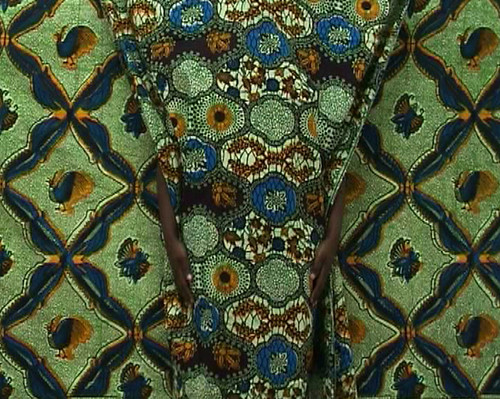

Botticelli's Venus

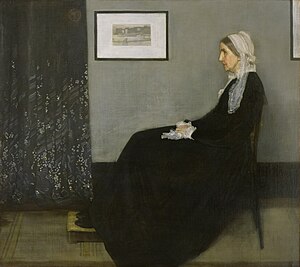
Whistlers Mother


Lewis Morley


Botticelli's Venus


Whistlers Mother
Platteland (1995)
'Platteland' is a common term meaning 'flat land' and 'countryside'
Strange. It is a state of mind. It is people living with the land, in the land, and with its people and with its animals and its plant life.
Retreat, newspaper

My image needs more distortion that enthesises the outlines and shapes of the figure.
I could also try and make the image appear older by using tools such as 'Sharpen', and adject the colours to create a more darkened highlight.
This is the result after I played with more effects. The over all image is OK, but I am not entirly happy with it. The image looks dull and lifeless, so I need to experiment further with effects.
Now You See Me, Now You Don't
In the Imperial War Museum, I found a book entitled 'Camouflage'.
I am planning to purchase this to help me with my research and understanding in this field.
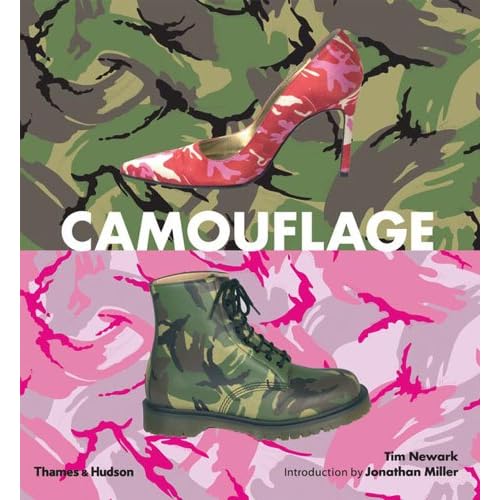
23/04/12
found today quite useful as I pulled together some more research. I need to decide what area I'm going to go into. (i was looking at furniture like Alan Jones, but also research links to different topics)
confused what my final outcome is going to be...
Ideas:
- Furniture e.g lamps, magazine racks
- Covering the body with fabric
- Looking at Roger Ballen has made me think more about photography and creating stills with a story behind them.
- Also Ballen gave me the idea of masks/ covering the face
Looking back I am mainly researching how the body is hidden, and not necessarily how it is used.
confused what my final outcome is going to be...
Ideas:
- Furniture e.g lamps, magazine racks
- Covering the body with fabric
- Looking at Roger Ballen has made me think more about photography and creating stills with a story behind them.
- Also Ballen gave me the idea of masks/ covering the face
Looking back I am mainly researching how the body is hidden, and not necessarily how it is used.
Friday, 20 April 2012
Roger Ballen
In the Manchester Art Gallery, an exibition by Roger Ballen is currently on show.
At first I found the images quite disturbing, but after taking time to study them and pay attention, I came to find them indering.
Ballen uses one or two figures to create a scene of lonliness and grunge, which reminds me of old films set in deserted America.
The images are made srong by the use of props and how the body is the centre of each image.
Bellow are some photographs which I find interesting.

Cat Catcher

Eugene on the Phone

Prowling

Bitten

Loner
http://www.manchestergalleries.org/whats-on/exhibitions/index.php?itemID=87
At first I found the images quite disturbing, but after taking time to study them and pay attention, I came to find them indering.
Ballen uses one or two figures to create a scene of lonliness and grunge, which reminds me of old films set in deserted America.
The images are made srong by the use of props and how the body is the centre of each image.
Bellow are some photographs which I find interesting.

Cat Catcher

Eugene on the Phone

Prowling

Bitten

Loner
http://www.manchestergalleries.org/whats-on/exhibitions/index.php?itemID=87
Friday, 13 April 2012
Ballen
Here are a few images by Roger Ballen that link with my work by using masks and fabric to hide parts of the body.
I could look more into masks and what the were orinonally used for ect.

Tommy, Sampson and a Mask


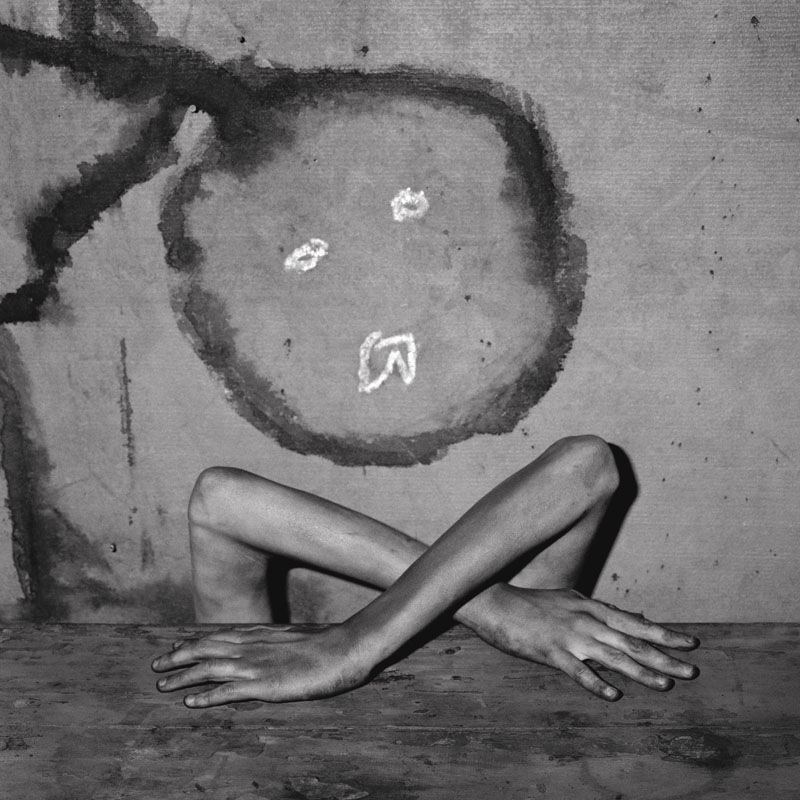

Alter Ego
I could look more into masks and what the were orinonally used for ect.

Tommy, Sampson and a Mask

Michael and Gerrie
Head Inside Shirt

Room of the Ninja Turtles

Mimicry
Skew Mask
Juxtaposed

Headless
Subscribe to:
Comments (Atom)









